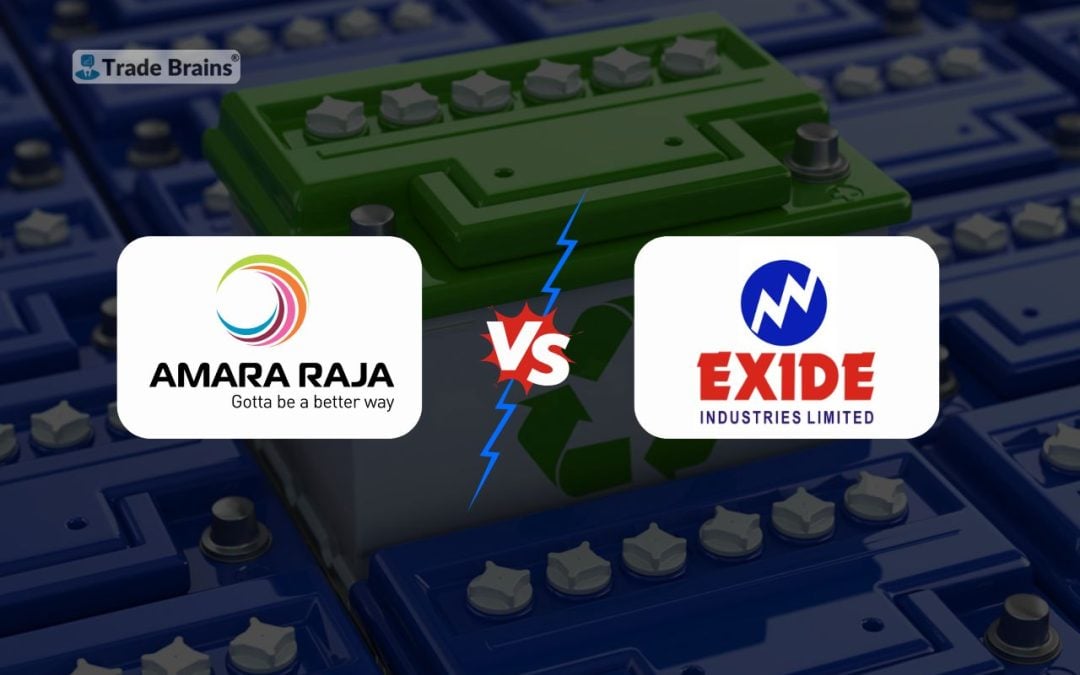In the highly competitive automotive battery sector, two industry giants dominate the race, reflecting evolving market dynamics. With rising demand for electric mobility and energy storage, investors must assess their manufacturing, distribution, and R&D capabilities to identify the leader best positioned for future growth.
Market Share
Exide holds a dominant 50% share of the domestic battery market, while Amara Raja has 35%. This gives Exide an edge in brand recognition and distribution.
Share Price Movement
Over the past 5 year, Exide Industries has outperformed Amara Raja significantly, providing a return of 97% compared to Amara Raja’s 38%.
Exide Industries has a larger market cap of Rs. 33,001 crore compared to Amara Raja’s Rs. 19,573 crore, indicating a more established presence in the market.
Financial Performance
Exide, a debt-free company, reported Q2FY25 revenue of Rs. 4,267 crore, an increase of 3.9 percent YoY, and PAT of Rs. 298 crore, a rise of 3.8 percent YoY. Amara Raja, with minimal debt, posted revenue of Rs. 3,251 crore, an increase of 9.8 percent YoY, but saw PAT decline to Rs. 236 crore, a drop of 1.2 percent YoY.
Amara Raja has shown stronger revenue growth with a CAGR of 11% over five years, while Exide’s revenue grew only at 3% during the same period. In terms of profit growth, Amara Raja outperformed Exide with a CAGR of 13% versus Exide’s 2%.
Exide is considered overvalued with a P/E ratio of 39 compared to Amara Raja’s 20. Overall the industry P/E is 30 indicating that Exide’s stock may be priced above its earnings potential.
Also read….
Future Capex plans
Amara Raja is investing Rs. 9,500 crore in a Telangana gigafactory to produce lithium-ion cells and battery packs with a planned capacity of 16 GWh for cells and 5 GWh for packs by FY27. Collaborating with Ather Energy and Gotion Inobat, the company is developing advanced battery technologies to achieve EV market leadership while aiming for balanced revenues between new energy and traditional sectors.
Exide Industries is investing in a lithium-ion cell manufacturing plant in Bengaluru, with a planned capacity of 12 GWh, the first phase of which will begin production by March 2025. The project, costing Rs. 6,000 crore, will help Exide capture a significant share of the growing EV and energy storage markets, especially in the automotive sector.
The company has partnered with SVOLT Energy Technology to enhance its production capabilities and plans to consolidate operations under Exide Energy Solutions Limited. With a projected rise in lithium-ion battery demand to 150 GWh by 2030.
Exide Industries is investing Rs. 6,000 crore in a lithium-ion cell manufacturing plant in Bengaluru with a 12 GWh capacity, set to start production by March 2025. Partnering with SVOLT Energy Technology, it aims to capture a significant share of the EV and energy storage markets, especially in the automotive sector, consolidating operations under Exide Energy Solutions Limited amid a projected lithium-ion battery demand of 150 GWh by 2030.
Conclusion
Exide Industries excels in market share and stock performance but has slower revenue growth. Amara Raja Batteries demonstrates higher revenue and profitability growth but it has seen slowdown. Most of the growth is driven by significant investments in future technologies, especially EVs. Investors should assess their risk profiles to decide between these market leaders.
Written by Fazal Ul Vahab C H
Disclaimer

The views and investment tips expressed by investment experts/broking houses/rating agencies on tradebrains.in are their own, and not that of the website or its management. Investing in equities poses a risk of financial losses. Investors must therefore exercise due caution while investing or trading in stocks. Dailyraven Technologies or the author are not liable for any losses caused as a result of the decision based on this article. Please consult your investment advisor before investing.


